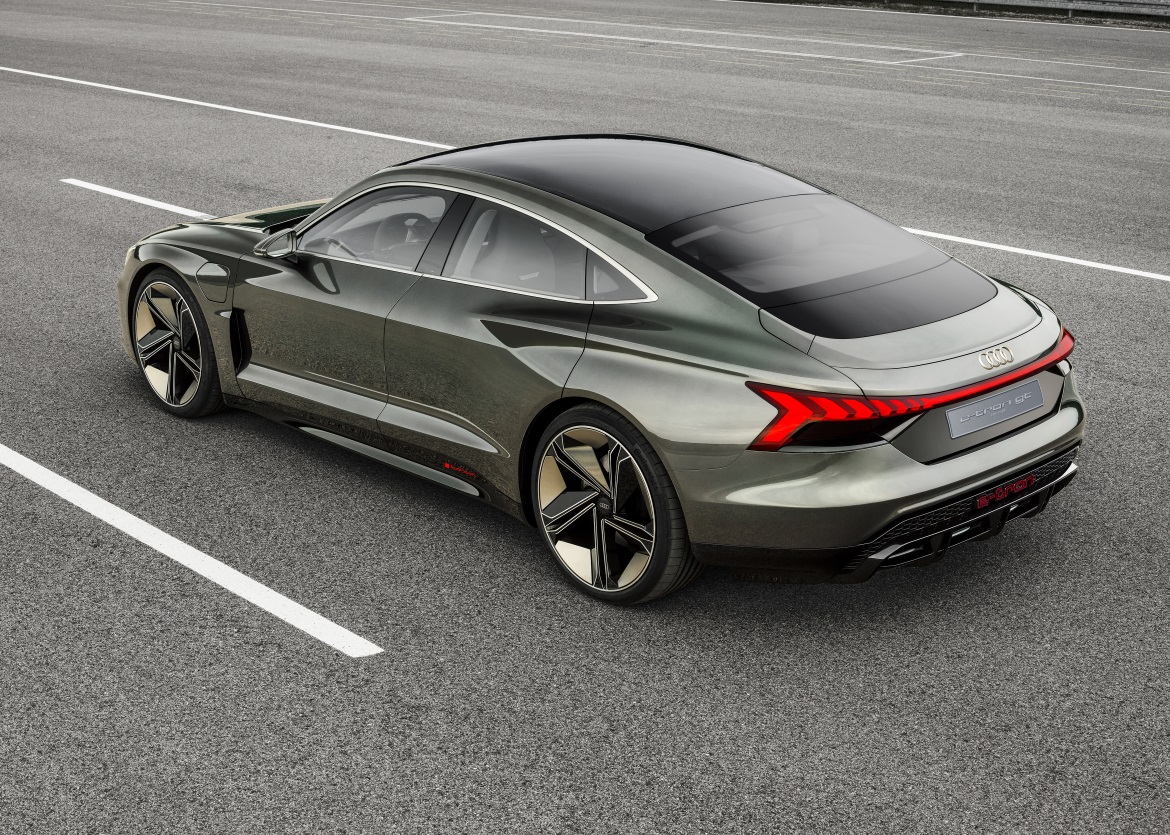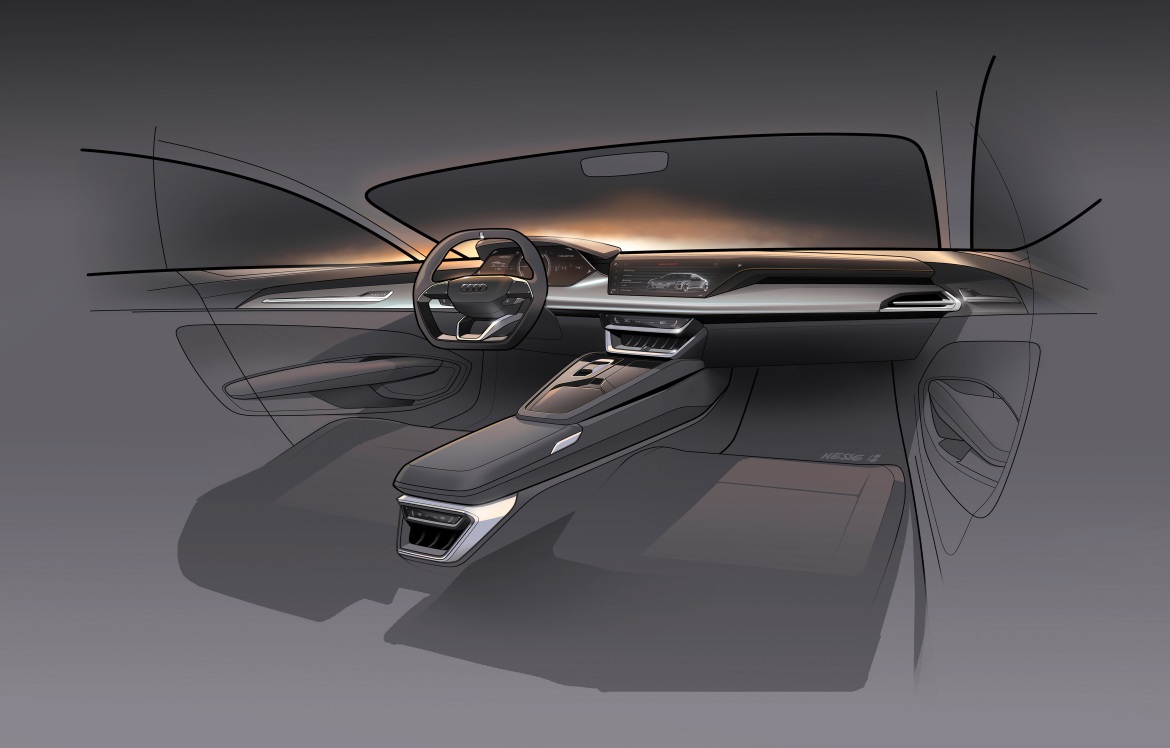With the electric powered Audi e-tron GT concept a four-door coupé is making its debut as a show car at Los Angeles Autoshow 2018. Flat, wide and with a long wheelbase – those are the proportions of a classic Gran Turismo. The lightweight body of the four-door coupé is manufactured using a multi-material construction. Here you have a roof section made from carbon along with numerous aluminum components and supporting elements made from high-strength steel. The technology for this automobile was developed in close collaboration with Porsche. Design and character are packed full of unmistakable Audi Dna.
The gently sloping roofline of the e-tron GT concept that extends well into the rear echoes the Sportback layout that is the hallmark of the brand. This is however clearly taken forward into the future, pointing the way to the next evolutionary stage of the Audi design language. The cabin that tapers strongly toward the rear stands out compared with current Audi models. Wheel arches and shoulders are sculpted emphatically and, together with the flat floor that is unusual for an electric vehicle, visually underlines the low center of gravity and the dynamic potential of the Audi e-tron GT concept.
The hallmark Audi Singleframe is located in the center of the front section. Compared with the two e-tron SUVs its architecture is much more horizontal. The hallmark Audi Singleframe is located in the center of the front section. Compared with the two e-tron SUVs its architecture is much more horizontal. The top half comes with a cover painted in body color. Its surface structure is reminiscent of the typical honeycomb pattern of the grille on the Audi RS models – a visual signal which characterizes the Audi e-tron GT concept as a future product of Audi Sport.
Both the screen of the central instrument and the touchscreen above the center console come with a black-panel look finish. They underscore the large, calm design of the interior with its predominantly horizontal basic architecture. Various layouts are available for the monitors to present the functions depending on the driver’s preference, including virtual instrument dials, easy-to-read navigation maps with information on the range, or various infotainment function menus. They are controlled via the touchscreen with tactile feedback. With the concept car the designers have deliberately gone for the consistent use of sustainable materials – a clear statement of contemporary automotive design.















